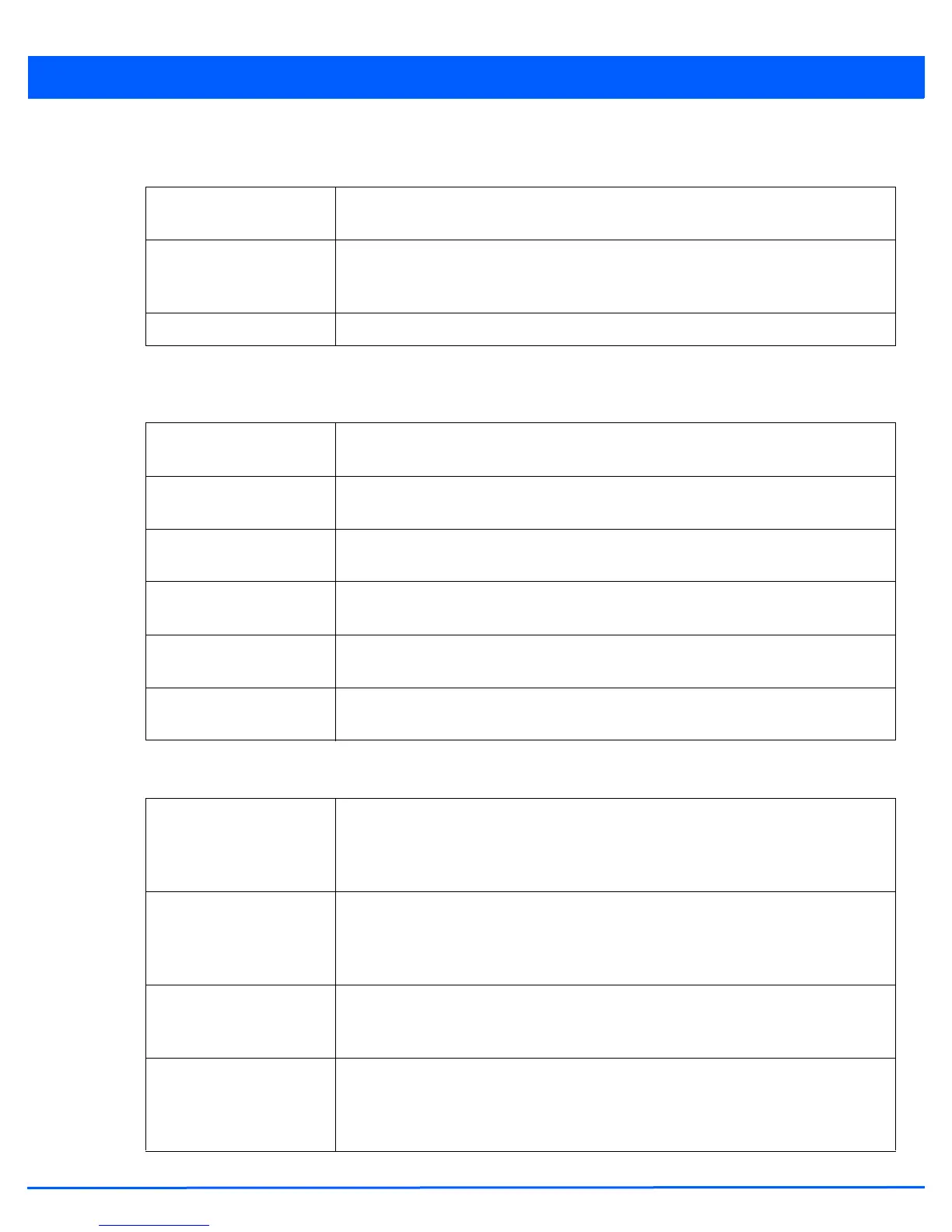13 - 46 WiNG 5.5 Access Point System Reference Guide
6. Review the Top 10 interference table to assess RF Domain member WLANs whose radios are contributing the highest
levels of detected interference within the RF Domain.
7. Review the Top 5 Active Radios to assess the significance of any Smart RF initiated compensations versus their reported
top performance.
8. Refer to the SMART RF Activity table to view the trending of Smart RF compensations.
WLAN Name Lists the WLANs whose member device radios are contributing to the highest levels of
interference detected within the RF Domain.
Radio Count Displays the number of radios within each listed WLAN that are contributing to the RF
Domain’s high levels of detected interference. These are the radios subject to Smart RF
power compensations to reconcile the high levels of interference.
Clients Lists the number of connected clients detected for the WLAN member device radios.
Radio MAC Lists the hardware encoded MAC address of each listed top performing RF Domain
member device radio.
RF Band Displays the top performing radio’s operation band. This may help administrate whether
more changes were required in the 2.4 GHz band then 5 GHz or vice versa.
AP Name Lists the administrator assigned access point name used to differentiate from other RF
Domain member access point radios.
Power Changes Displays the number of Smart RF initiated power level changes reported for this top
performing RF Domain member radio.
Channel Changes Displays the number of Smart RF initiated channel changes reported for this top
performing RF Domain member radio.
Coverage Changes Displays the number of Smart RF initiated coverage changes reported for this top
performing RF Domain member radio.
Time Period Lists the frequency Smart RF activity is trended for the RF Domain. Trending periods
include the Current Hour, Last 24 Hours or the Last Seven Days. Comparing Smart RF
adjustments versus the last seven days enables an administrator to assess whether
periods of interference and poor performance were relegated to just specific periods.
Power Changes Displays the number of Smart RF initiated power level changes needed for RF Domain
member devices during each of the three trending periods. Determine whether power
compensations were relegated to known device outages or if compensations were
consistent over the course of a day or week.
Channel Changes Lists the number of Smart RF initiated channel changes needed for RF Domain member
devices during each of the three trending periods. Determine if channel adjustments were
relegated to known device count increases or decreases over the course of a day or week.
Coverage Changes Displays the number of Smart RF initiated coverage changes needed for RF Domain
member devices during each of the three trending periods. Determine if coverage changes
were relegated to known device failures or known periods of interference over the course
of a day or week.

